26th August, 2025
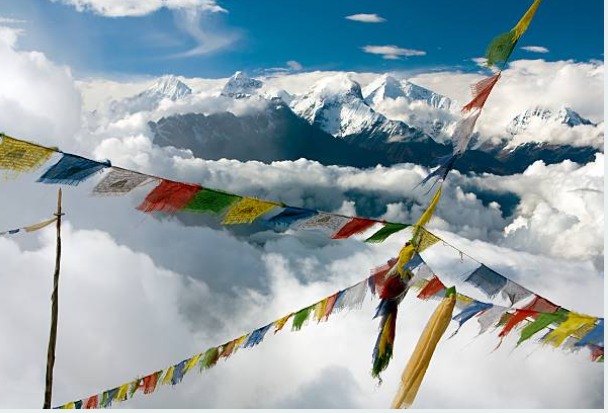
Aug 01, 2023
Langtang Valley Trek in September
- Why Langtang Trek in September
- Highlights of Langtang Valley Trek in September
- Langtang Trek Weather and Temperature in September
- Prepare for the Langtang Valley Trek in September
- What to Pack for Langtang Valley Trek in September
- Food and Accommodation
- Guide and Porter
- Permit and Transportation
- How Difficult is the Langtang Valley Trek?
- Can I do a Solo Langtang Trek?
- Is the Langtang Trek Suitable for Beginners?
- Conclusion
- Langtang Region Packages
The Langtang Valley Trek in September offers an enchanting blend of natural beauty and cultural richness, making it an ideal time for adventure enthusiasts to explore this stunning region of Nepal. Nestled in the heart of the Himalayas, the Langtang Valley is renowned for its breathtaking landscapes, diverse flora and fauna, and the warm hospitality of the Tamang and Sherpa communities.
September marks the end of the monsoon season, bringing clear skies and lush greenery to the valley. The trails are adorned with blooming wildflowers, and the rivers and waterfalls are at their most vibrant, thanks to the recent rains. The weather is generally mild, with daytime temperatures ranging from 10°C to 20°C, making it comfortable for trekking.
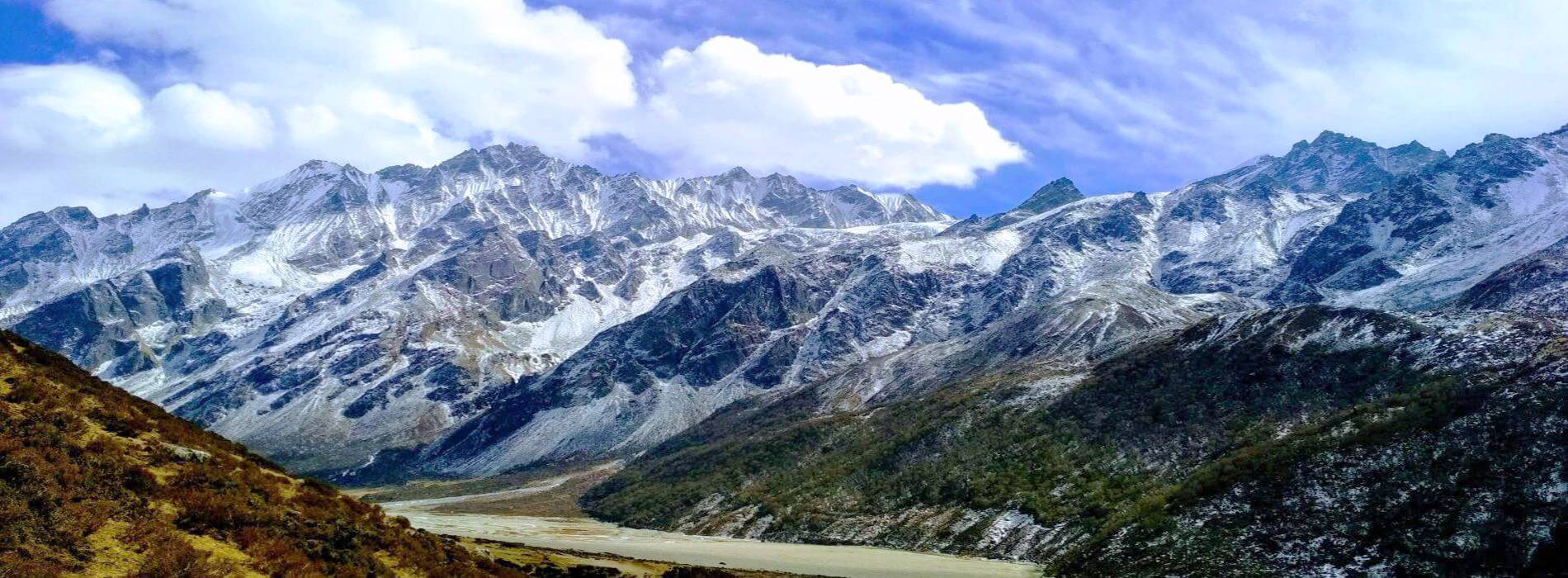
LANGTANG VALLEY TREK
A visit to Langtang National Park, Nepal’s first Himalayan national park- formed in 1976, is a wonderland of natural beauty and rich Tamang culture and only a hop-step and jump from Kathmandu!The Lang...
The journey begins with a scenic drive from Kathmandu to Syabrubesi, the starting point of the trek. As you ascend through dense forests of rhododendron and bamboo, you’ll encounter a variety of wildlife, including the elusive red panda and numerous bird species. The trail offers spectacular views of snow-capped peaks such as Langtang Lirung, Ganesh Himal, and Dorje Lakpa.
One of the highlights of the trek is visiting Kyanjin Gompa, a serene monastery surrounded by towering mountains. Here, trekkers can immerse themselves in the local culture, sample traditional Tibetan cuisine, and even hike up to Tserko Ri for panoramic views of the Langtang range.
In September, the Langtang Valley Trek promises a perfect blend of adventure, natural beauty, and cultural immersion, making it a must-visit destination for trekkers seeking an unforgettable Himalayan experience.
Why Langtang Trek in September
The Langtang Valley Trek in September is an exceptional choice for trekkers seeking a blend of natural beauty, cultural richness, and favorable weather conditions. September marks the end of the monsoon season in Nepal, which means the trails are lush and vibrant, adorned with blooming wildflowers and verdant landscapes. The skies clear up, offering stunning views of the snow-capped peaks and the surrounding valleys. The weather is generally mild, making it comfortable for trekking during the day and cozy at night. Additionally, September is less crowded compared to the peak trekking months of October and November, allowing for a more serene and intimate experience with nature. The local Tamang and Sherpa communities are welcoming, and trekkers can immerse themselves in the rich cultural heritage of the region. Overall, the combination of clear skies, lush scenery, and fewer crowds makes September an ideal time to embark on the Langtang Valley Trek.
Highlights of Langtang Valley Trek in September
The Langtang Valley Trek in September is filled with numerous highlights that make it a memorable adventure. One of the main attractions is the stunning natural beauty of the Langtang National Park, which is at its peak after the monsoon season. The trails are lined with colorful wildflowers, and the forests are lush and green. Trekkers can enjoy breathtaking views of majestic peaks such as Langtang Lirung, Ganesh Himal, and Dorje Lakpa. The trek also offers a chance to explore the rich cultural heritage of the Tamang and Sherpa communities. Visiting Kyanjin Gompa, a serene monastery surrounded by towering mountains, is a spiritual highlight of the trek. Here, trekkers can experience traditional Tibetan culture, sample local cuisine, and even hike up to Tserko Ri for panoramic views of the Langtang range. Wildlife enthusiasts will appreciate the opportunity to spot rare species like the red panda and various bird species. Overall, the combination of natural beauty, cultural immersion, and wildlife encounters makes the Langtang Valley Trek in September truly special.
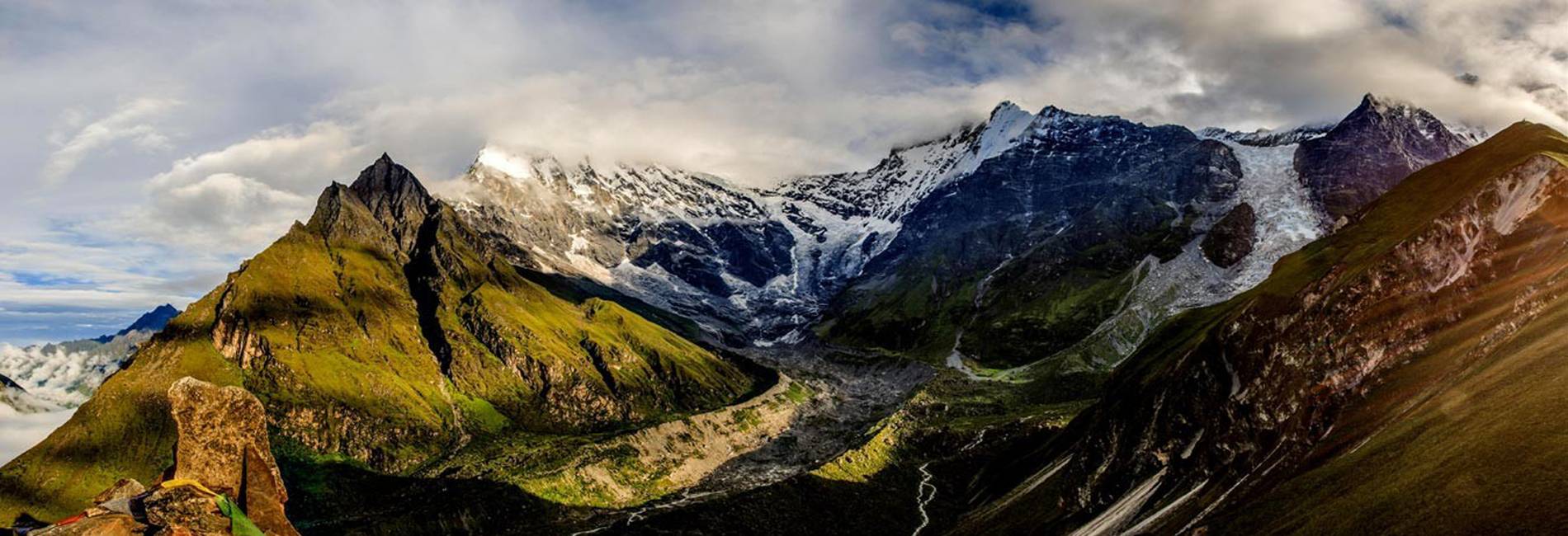
TAMANG HERITAGE TREK
LET THIS BE YOUR AWAKENING AND INTRODUCTION TO TIBETAN BUDDHISM.This is a spiritual journey into the heart of the Tibetan Buddhist region in the Langtang Valley on the Tibetan border. This maybe your...
Langtang Trek Weather and Temperature in September
The weather and temperature during the Langtang Valley Trek in September are generally favorable for trekking. As the monsoon season comes to an end, the skies clear up, offering stunning views of the surrounding mountains and valleys. Daytime temperatures typically range from 10°C to 20°C, making it comfortable for trekking. The nights can be cooler, with temperatures dropping to around 5°C to 10°C, so it's essential to pack warm clothing for the evenings. The trails are lush and green, thanks to the recent rains, and the rivers and waterfalls are at their most vibrant. While there may still be occasional rain showers, they are usually brief and do not significantly impact the trekking experience. The mild weather and clear skies make September an ideal time to enjoy the natural beauty and breathtaking views of the Langtang Valley. Overall, the weather and temperature in September provide a pleasant and comfortable trekking experience.
Prepare for the Langtang Valley Trek in September
Preparing for the Langtang Valley Trek in September involves several key steps to ensure a safe and enjoyable experience. First and foremost, it's essential to be physically fit and mentally prepared for the trek. Regular exercise and cardiovascular training in the months leading up to the trek can help build stamina and endurance. It's also important to acclimatize properly to the altitude, so plan for gradual ascent and take rest days as needed. Packing the right gear is crucial; include waterproof clothing, sturdy trekking boots, warm layers for the evenings, and a good quality sleeping bag. Since September can still have occasional rain showers, a reliable rain jacket and waterproof backpack cover are essential. Additionally, pack essentials like a first aid kit, water purification tablets, and high-energy snacks. It's also advisable to carry some cash, as ATMs may not be available in remote areas. Lastly, ensure you have the necessary permits and travel insurance that covers trekking activities. Proper preparation will help you make the most of your Langtang Valley Trek in September.
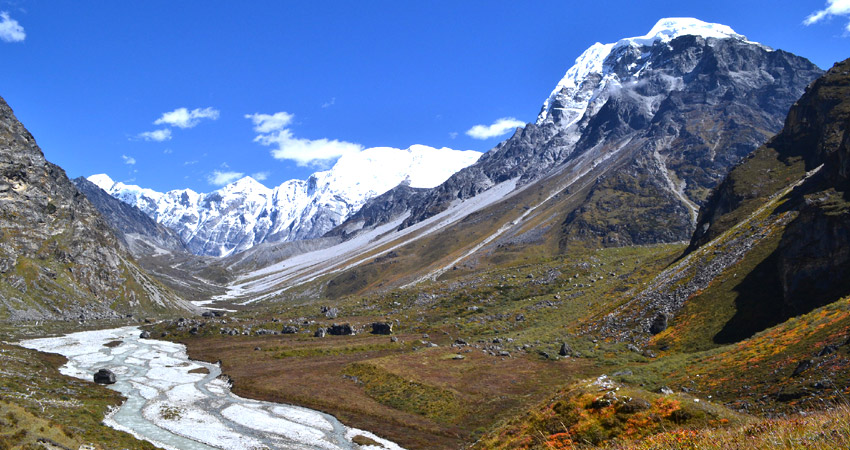
LANGTANG GOSAINKUNDA LAKE TREK
The Langtang Gosainkunda Lake (4380m) Trek takes you to alpine regions that will blow your mind! In a short trip from Kathmandu, you will find yourself in a pristine countryside in Nepal’s first...
What to Pack for Langtang Valley Trek in September
Packing for the Langtang Valley Trek in September requires careful consideration to ensure you have everything you need for a comfortable and safe journey. Here’s a comprehensive packing list:
1. Clothing: Lightweight, moisture-wicking base layers, warm mid-layers (fleece or down jacket), waterproof and windproof outer layers, trekking pants, thermal underwear, and a hat and gloves for cold evenings.
2. Footwear: Sturdy, waterproof trekking boots with good ankle support, comfortable trekking socks, and gaiters to keep out debris.
3. Gear: A durable backpack with a rain cover, a sleeping bag rated for cold temperatures, trekking poles, a headlamp with extra batteries, and a reusable water bottle or hydration system.
4. Rain Protection: A reliable rain jacket, waterproof pants, and a poncho or backpack cover.
5. Personal Items: Sunscreen, sunglasses, a wide-brimmed hat, lip balm, personal hygiene items, a quick-dry towel, and a small first aid kit.
6. Miscellaneous: High-energy snacks, water purification tablets, a map and compass or GPS device, a camera, and some cash for expenses along the way.
By packing these essentials, you’ll be well-prepared to tackle the Langtang Valley Trek in September.
Food and Accommodation
During the Langtang Valley Trek in September, trekkers can expect a variety of food and accommodation options that cater to different preferences and budgets. The teahouses along the trail offer basic but comfortable lodging, with private rooms or dormitory-style accommodations. The rooms are usually equipped with a bed, blanket, and pillow, but it's advisable to bring your own sleeping bag for added warmth and comfort. The teahouses also have communal dining areas where trekkers can enjoy hearty meals. The menu typically includes traditional Nepali dishes like dal bhat (rice and lentil soup), momo (dumplings), and thukpa (noodle soup), as well as international options like pasta, pancakes, and omelets. Vegetarian options are widely available, and it's important to stay hydrated by drinking plenty of boiled or purified water. While the food is generally simple, it is nutritious and provides the necessary energy for trekking. Overall, the teahouses offer a cozy and welcoming environment, allowing trekkers to rest and refuel after a day on the trail.
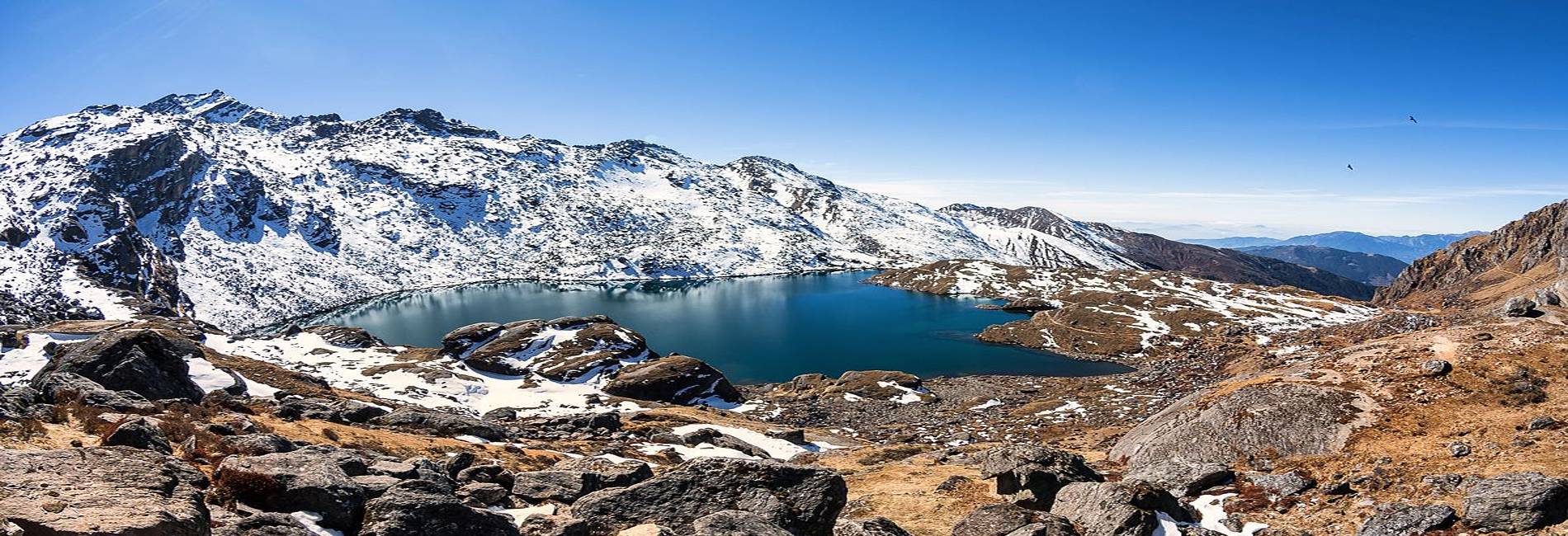
GOSAINKUNDA LAKE TREK
Bath in the pristine clear “holy” water of Gosainkunda Lake, a religious site and abode of Hindu deities Shiva and Gauri. This is a short trek in the much less crowded and quiet Langtang Region o...
Guide and Porter
Hiring a guide and porter for the Langtang Valley Trek in September can greatly enhance your trekking experience. A knowledgeable guide can provide valuable insights into the local culture, history, and natural surroundings, making the trek more enriching and enjoyable. They can also assist with navigation, ensuring you stay on the right path and avoid any potential hazards. Additionally, a guide can help with communication, as they are often fluent in both English and the local languages. Hiring a porter to carry your heavy backpack allows you to trek more comfortably and focus on enjoying the scenery. Porters are accustomed to the terrain and can carry up to 20-25 kg of gear, making the trek less physically demanding for you. It's important to hire guides and porters through reputable agencies.
Permit and Transportation
Embarking on the Langtang Valley Trek requires a few essential permits and a good understanding of the transportation options available. Firstly, trekkers need to obtain the Langtang National Park Entry Permit, which costs around NPR 3,000 for foreign nationals. Additionally, a TIMS (Trekkers' Information Management System) card is mandatory, costing about NPR 2,000. These permits can be acquired in Kathmandu at the Nepal Tourism Board office or through registered trekking agencies.
Transportation to the starting point of the Langtang Valley Trek, typically Syabrubesi, is relatively straightforward but can be an adventure in itself. Public buses and jeeps are available from Kathmandu, with the journey taking approximately 7-9 hours depending on road conditions. The bus ride offers a glimpse into the rural landscapes and local life, but be prepared for a bumpy and winding road. For those seeking more comfort, private jeeps can be hired, which are faster and more convenient but come at a higher cost. Regardless of the mode of transport, the journey to Syabrubesi sets the stage for the incredible trek ahead.
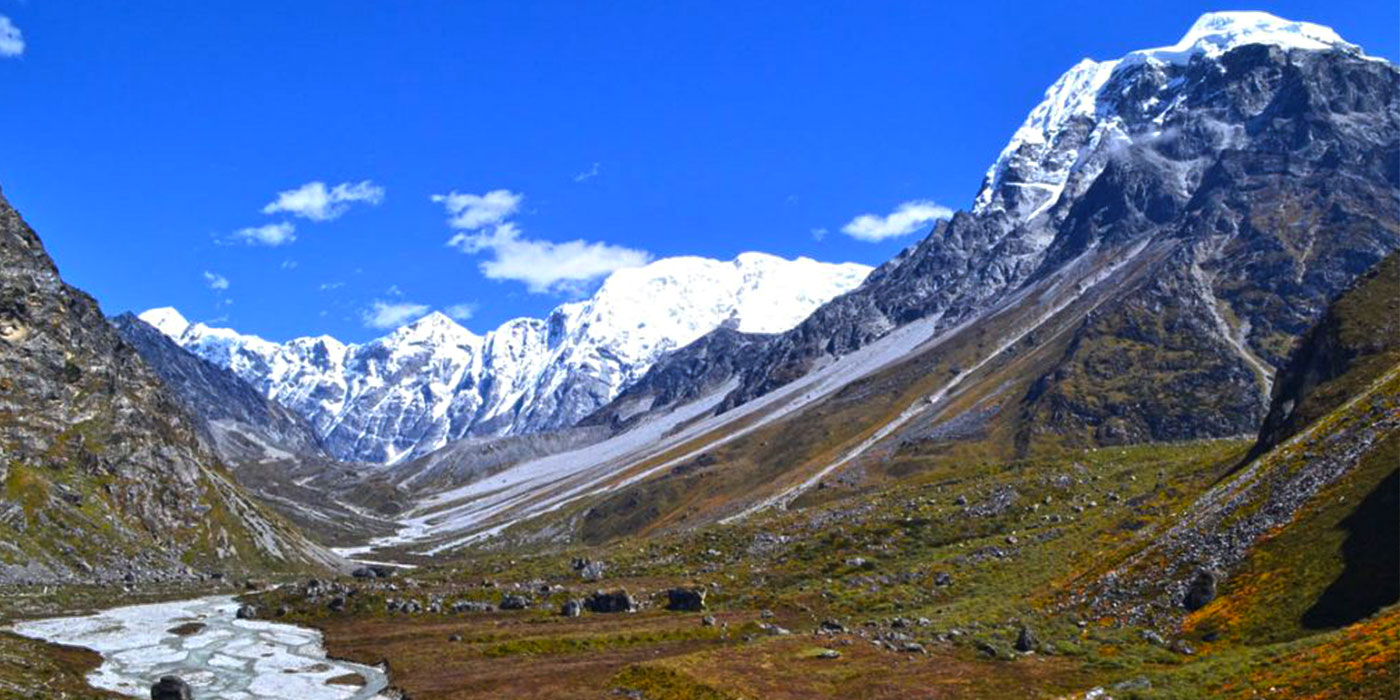
LANGTANG VALLEY TREK 8 DAYS
Langtang National Park is a land of unspoiled beauty, becoming Nepal’s first Himalayan national park in 1976. It is also home to the Tibetan Buddhist Tamang people and is a stone’s throw from Kat...
How Difficult is the Langtang Valley Trek?
The Langtang Valley Trek is considered moderately difficult, making it accessible to a wide range of trekkers, including those with some prior trekking experience. The trek spans about 7-10 days, covering a distance of approximately 70 kilometers (43 miles). The trail involves a mix of steep ascents, descents, and relatively flat sections, with daily walking hours ranging from 5 to 7 hours.
One of the main challenges of the Langtang Valley Trek is the altitude. Trekkers reach a maximum elevation of around 4,984 meters (16,352 feet) at Tserko Ri. Proper acclimatization is crucial to avoid altitude sickness, and it's recommended to take rest days and ascend gradually. The terrain can be rugged and uneven, with rocky paths and occasional river crossings, so good physical fitness and stamina are essential.
Weather conditions also play a significant role in the trek's difficulty. The best times to trek are during the pre-monsoon (March to May) and post-monsoon (September to November) seasons when the weather is more stable. However, trekkers should be prepared for sudden changes in weather and carry appropriate gear. Overall, while the Langtang Valley Trek presents some challenges, it is manageable with proper preparation and determination.
Can I do a Solo Langtang Trek?
Yes, it is possible to do the Langtang Valley Trek solo, and many trekkers choose this option for the sense of freedom and adventure it offers. However, there are several factors to consider before deciding to trek solo. Firstly, ensure you have all the necessary permits, which can be obtained in Kathmandu. Solo trekkers should also be well-prepared with a detailed map, a reliable guidebook, and a good understanding of the trail.
While the Langtang Valley Trek is relatively well-marked, having some basic navigation skills is beneficial. It's also important to inform someone about your trekking plans and expected return date for safety reasons. Solo trekkers should be self-sufficient, carrying essential supplies such as food, water, a first aid kit, and appropriate clothing for varying weather conditions.
One of the advantages of trekking solo is the flexibility it offers in terms of pace and itinerary. However, it also means you won't have the immediate support of a group in case of emergencies. Therefore, it's crucial to be cautious and avoid taking unnecessary risks. Many solo trekkers find the local teahouses along the route to be welcoming and a great place to meet fellow trekkers, which can add a social aspect to the journey. Overall, with proper preparation and caution, a solo trek in the Langtang Valley can be a rewarding and memorable experience.
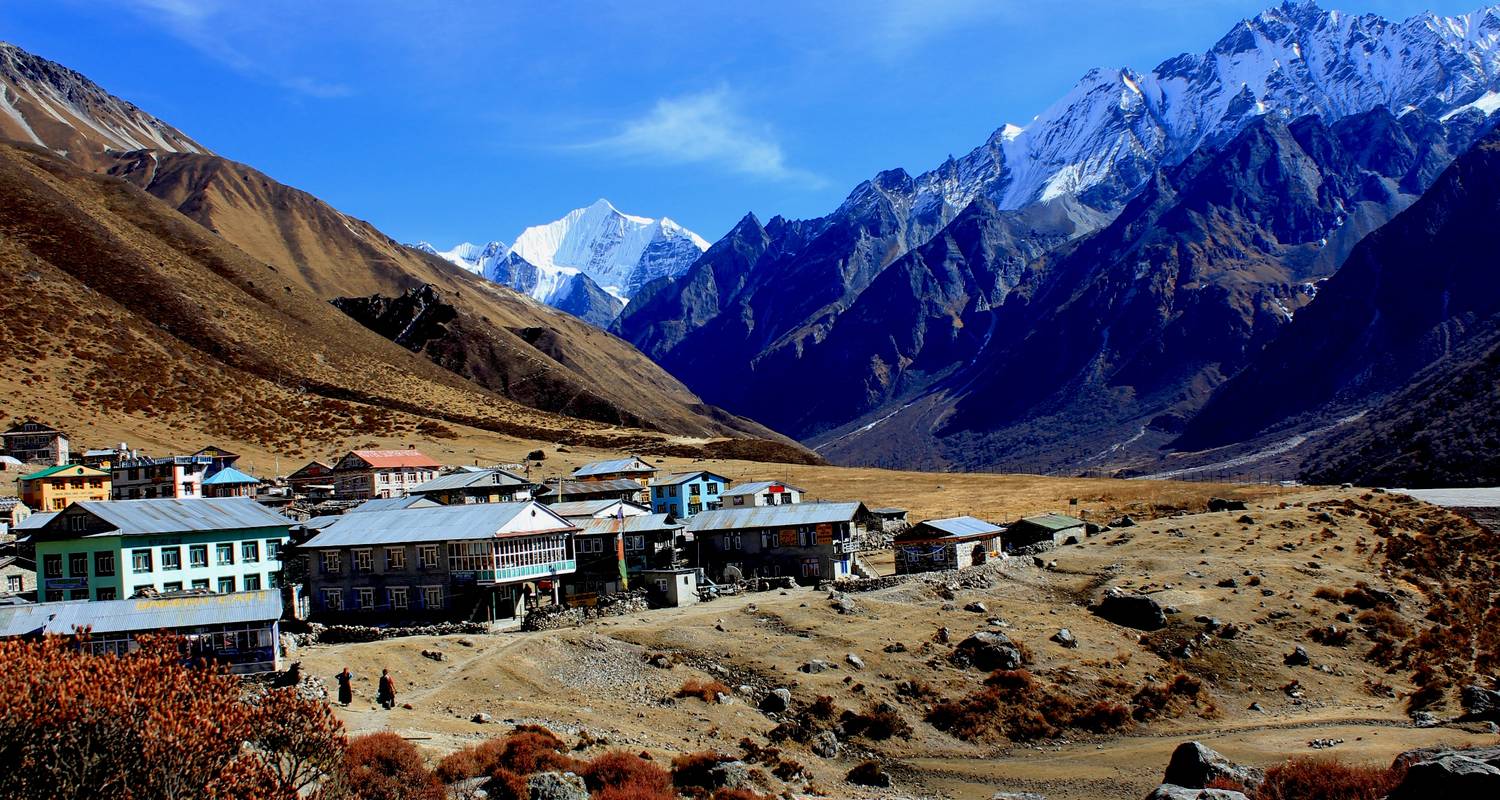
LANGTANG VALLEY TREK 7 DAYS
The Langtang valley, located 61.8 km far from Kathmandu, amazing travelers with its Himalayan streams and magnificent views. Mt. Langtang Lirung (7246 meters) surrounds the colorful rhododendron,...
Is the Langtang Trek Suitable for Beginners?
The Langtang Valley Trek can be suitable for beginners, provided they are adequately prepared and have a reasonable level of physical fitness. While the trek is classified as moderate in difficulty, beginners should be aware of the challenges posed by the terrain and altitude. Prior trekking experience is not mandatory, but some level of physical preparation, such as regular walking, hiking, or cardiovascular exercises, is highly recommended.
Beginners should take the trek at a comfortable pace, allowing ample time for acclimatization and rest. It's advisable to plan for a longer duration to avoid rushing and to ensure proper acclimatization to the altitude. Hiring a guide or joining a guided trek can be beneficial for beginners, as it provides additional support, local knowledge, and assistance in case of any difficulties.
Proper gear is essential for a successful trek. Beginners should invest in good quality trekking boots, warm clothing, a sturdy backpack, and other necessary equipment. It's also important to stay hydrated, eat well, and listen to your body throughout the trek.
While the Langtang Valley Trek presents some challenges, the stunning landscapes, rich cultural experiences, and the sense of achievement make it a rewarding adventure for beginners. With the right preparation and mindset, even those new to trekking can enjoy the beauty and serenity of the Langtang Valley.

HELAMBU TREK
Big on beauty for those short on time!The Helambu region is a short trek about 72 km from Kathmandu and offers trekkers so much in such a short space of time. The word Helambu derives from the w...
Conclusion
The Langtang Valley Trek is a captivating journey that offers trekkers a blend of natural beauty, cultural richness, and a sense of adventure. Whether you're navigating the permit process and transportation logistics, assessing the trek's difficulty, considering a solo adventure, or determining its suitability for beginners, proper preparation is key to a successful and enjoyable experience.
The trek's moderate difficulty level makes it accessible to many, but it's important to respect the challenges posed by altitude and terrain. Solo trekkers can find freedom and flexibility, while beginners can take on the trek with adequate preparation and support. Ultimately, the Langtang Valley Trek promises breathtaking views, encounters with local Tamang culture, and a profound connection with nature.
By approaching the trek with careful planning, respect for the environment, and an open heart, you'll be rewarded with memories that last a lifetime. Whether you're a seasoned trekker or a novice adventurer, the Langtang Valley Trek offers an unforgettable journey into one of Nepal's most beautiful regions.
Langtang Region Packages
Any Questions? Let Us Know.
Recent Posts
17th June, 2025


















